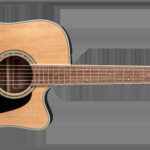The guitar harmony in the Eagles’ “Hotel California” is instantly recognizable and a dream for many guitarists to replicate. If you’ve ever tried to play it yourself or with another guitarist, you might have noticed it’s surprisingly tricky to get it to sound exactly like the record. It’s more than just playing the same chords; the magic lies in the intricate layering of guitar parts. Let’s break down why perfectly duplicating this iconic sound is so challenging and what musical concepts are at play.
Understanding Chord Inversions and Guitar Harmony
The complexity arises from the use of chord inversions. When playing chords, guitarists can voice them in different ways, meaning the notes of the chord are arranged in a different order, especially the bass note. In “Hotel California,” the genius is that each guitar isn’t simply playing the same chord shape. Instead, they are playing different inversions of the same chord, creating a rich and interwoven harmonic texture.
Take the very first chord, B minor (Bm), as an example. This chord consists of the notes B, F#, and D. In the recording, one guitar might be playing a Bm inversion with D as the lowest note (D, B, F#), while another guitar harmonizes with an inversion starting on F# (F#, D, B). While both are Bm chords, the different voicings create distinct harmonic layers. You can harmonize the first two notes between the guitars, but the crucial last note in each voicing makes a direct, simple harmony challenging to achieve with standard harmonizers.
The second chord, F#7 (F#, Bb, C#, E), presents a similar situation. One guitar could voice it as C#, Bb, F#, while another plays E, C#, Bb. Again, different inversions create harmonic complexity. This pattern of using inversions and harmonizing across different voicings continues throughout the initial chord progression and the entire song, contributing to the unique and full sound of “Hotel California.”
Why Simple Harmonizers Fall Short
Many guitar harmonizers work by adding harmonies based on scales, not specifically on chords. For “Hotel California,” using a B minor scale to harmonize over a Bm chord won’t work effectively. A Bm pentatonic scale, for instance (B, D, E, F#, A), would produce incorrect harmonies. If you played a D note, the harmonizer might generate an F# (correct), but if you played a B, it might harmonize to an E (incorrect, should be D in a Bm voicing context), and an F# would become a B (incorrect). The intervals are chord-specific, not scale-dependent in this case.
Achieving a Close Approximation
While perfect duplication using standard harmonizers is extremely difficult, getting a close approximation is possible with advanced techniques or studio trickery. One potential, albeit complex, method could involve using a whammy pedal or similar pitch-shifting effects to manipulate individual notes within chords, effectively creating inversions in real-time. However, this requires intricate control and a deep understanding of the song’s arrangement.
Ultimately, the magic of “Hotel California” lies in its detailed and deliberate arrangement of multiple guitar parts, each playing inversions and harmonizing in a way that goes beyond simple chord duplication. While a perfect, easy replication might be elusive, understanding the concept of chord inversions and the complexity of the original recording brings you closer to appreciating the genius behind this iconic guitar harmony and perhaps finding creative ways to approximate its essence in your own playing.

